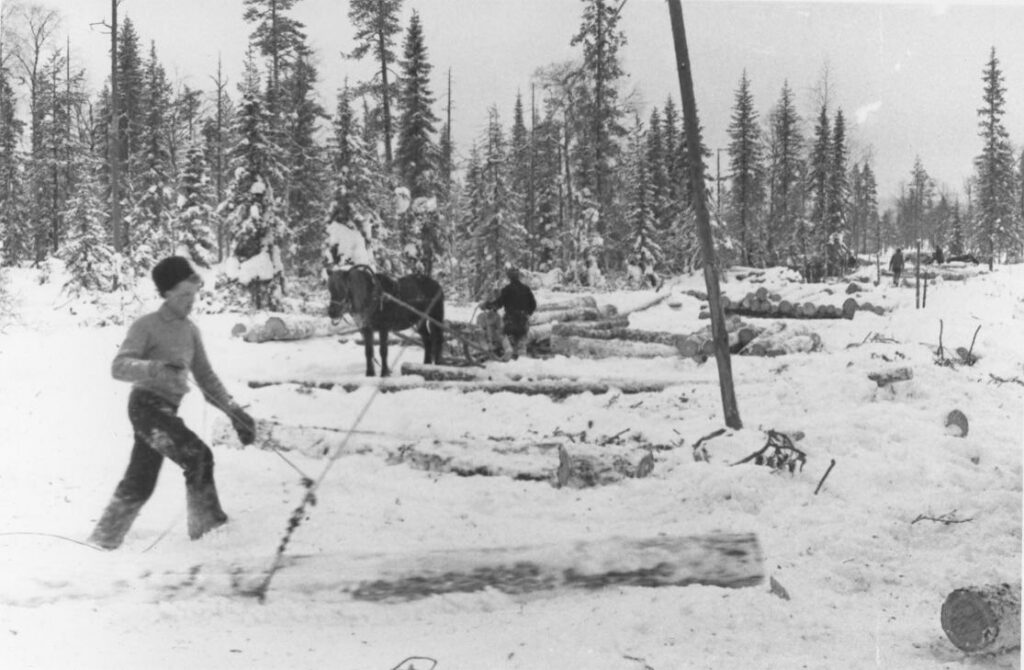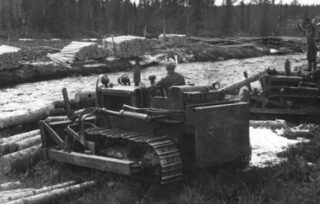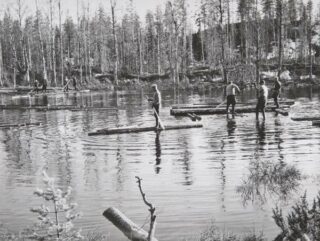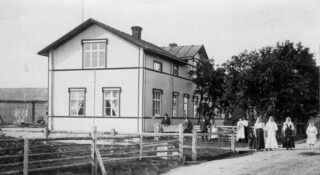In the winter, men from Kuusamo went to work in large numbers in the lumberyards of Lapland, where the state felled its forests and floated timber along the River Kemijoki to the factories on the coast. However, the pay was poor, especially during the Great Depression in the early 1930s. In the spring, the lumberjacks could return home with no food and no money. The salary was only enough to buy their own food.
There was some private entrepreneurship in Kuusamo. The most notable industrial sector was the manufacture of whetstones, the largest company being the Jyrkänkoski whetstone factory in Vuotunki. The whetstones were prefabricated in homes and finished in a water-powered factory. The finished products were marketed by regular traders all over Finland and a lot in Northern-Sweden as well. The need for whetstones was great, when the most important working tool on the farms at that time in the hay field was the scythe, which required constant sharpening.
A few sawmills were built in Kuusamo. Planks and boards were mostly transported to Oulu by trucks. The bad road and the low capacity of the transport fleet made it difficult to operate, and the companies did not operate for long. Log transfer facilities were also built for floating raw timber along the River Iijoki to the west, on the Vanttaja isthmus and Kitka’s Akanlahti. Even these projects were not successful in the long run.
The number of shops in Kuusamo increased strongly. Kuusamo Osuuskauppa co-op expanded its operations by opening a store in all larger villages. Private merchants also set up shops in many villages. The growing selection of goods enlivened the side villages by bringing into everyday use many such consumer goods that twenty years earlier were not even known about.
The public school grew strongly and in 1938 there was a school in every school district. There were more than 1 700 students, and 67 teachers. There was a “base library” in the church town and district libraries in several villages. Many cultural events were organized in the church town, especially by the folk college founded in 1909. Plays were popular, as were the performances of the White Guard’s Rajan laulu -choir. Programmatic civic parties, where the performers were often border guards working in the locality, were particularly popular.
Kuusamo’s population increased by fifteen thousand people in the first two decades of independence, even though Posio separated into its own municipality in 1926. Especially the end of the 1930s was a time of strong population growth. In 1939 there were more than 14 200 inhabitants in Kuusamo. The church town grew most strongly, which in the middle of the 19th century had included only a few farmhouses, along with the church and vicarage. Before the outbreak of the Winter War, the church town of Kuusamo was a densely built settlement of almost a thousand inhabitants. Their professions represented a wide spectrum in society: from doctors to general laborers and farmers, from teachers to professionals and household servants



